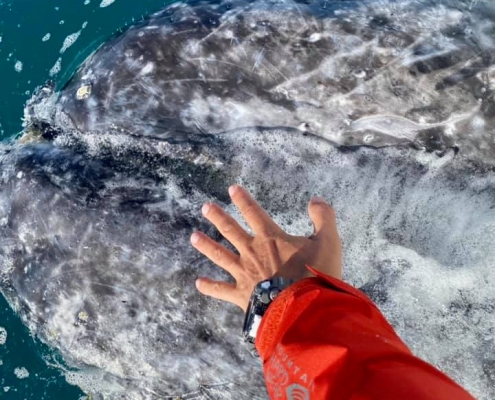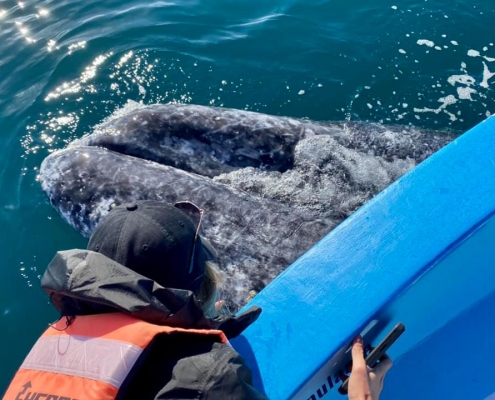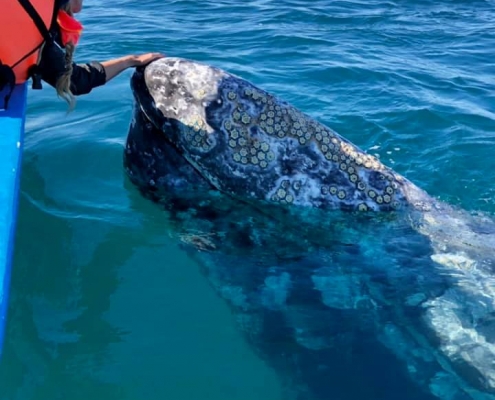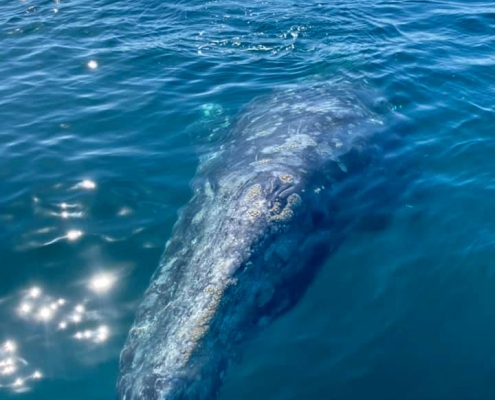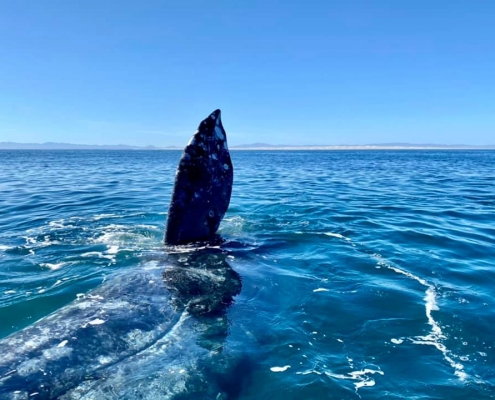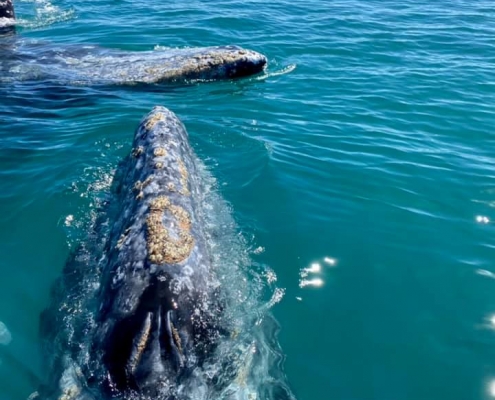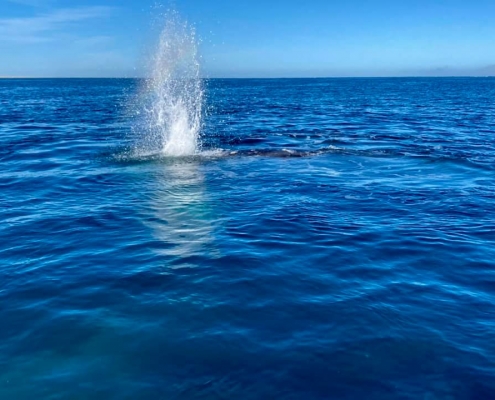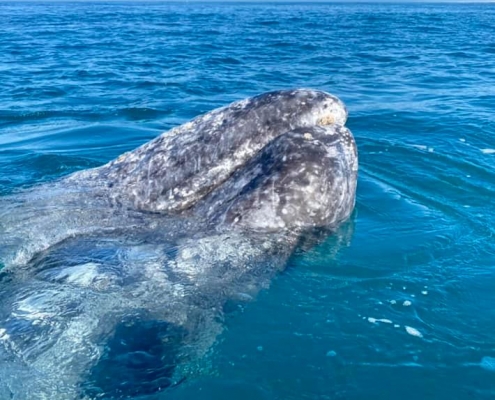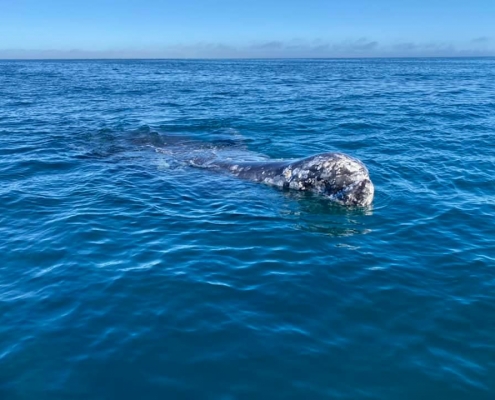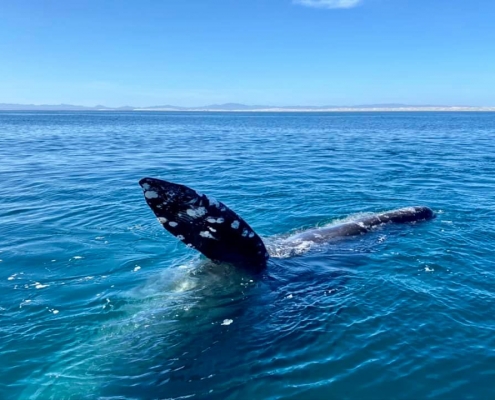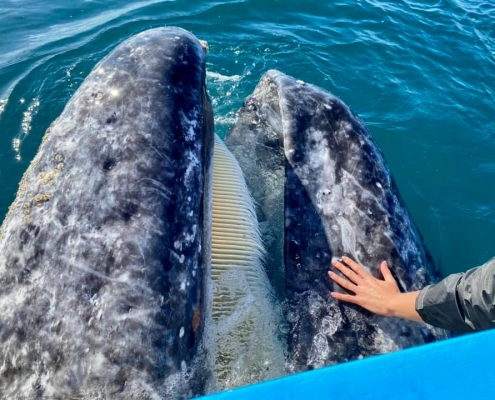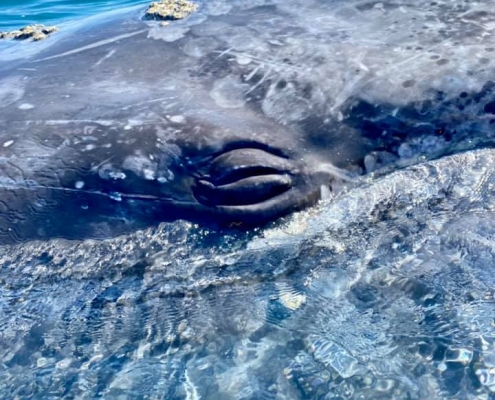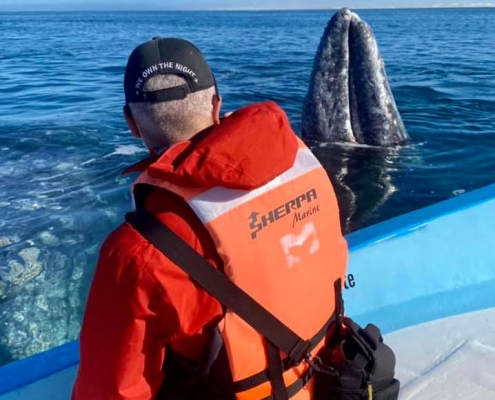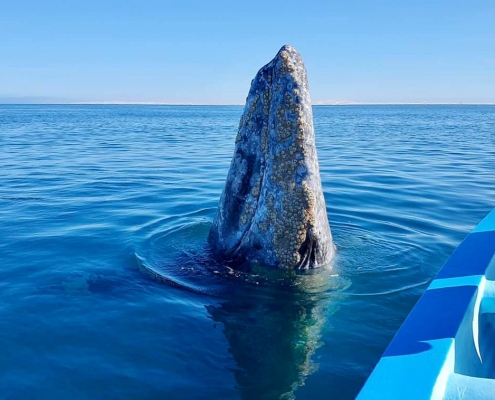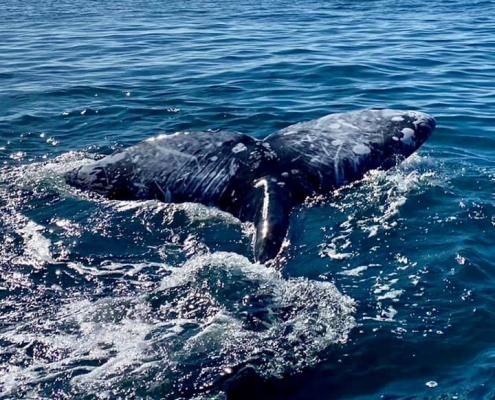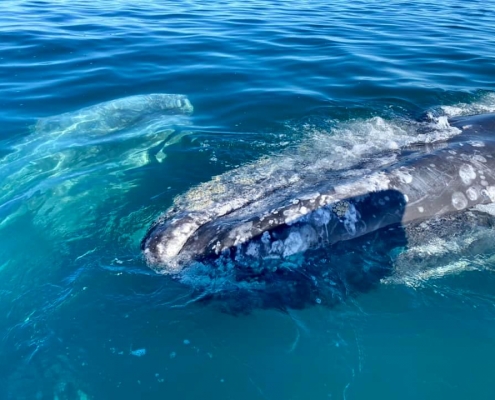Mexico/Baja Sur: Ojo de Libre Lagoon – Whalewatching (Zona A)
Our first outing to see grey whales at Ojo de Libre at the inner lagoon (Zona B) was a complete blowout – touching grey whales as two of them came close to the boat. But the trip to the mouth of the lagoon and Zona A for whalewatching was absolutely beyond anything imaginable. Nearly five hours in the water and as soon as we got into the deeper waters a whole came right up to the boat, then a second one, a third, and then threw more!!! Six massive whales – all playing with a tiny glass boat at the same time – spyhopping in front of the boat, rubbing against the boat’s edge, spouting water on us (we all got totally soaked), pushing the boat around and almost flipping it. 6 whales! It just can’t be any closer then this, we all touched whales, and one even opened his mouth with the baleen teeth. And we probably saw over 50-60 whales in total. Of all the whale species, grey whales are most heavily covered with barnacles since they swim rather slowly during the long migrations. Barnacles on grey whales are specific species that live only on them – they are not parasites and don’t harm the whales in any way, they are just free riders, and one type of barnacle, Cryptolepas rhachianecti, attaches only to gray whales. Once this type of small crustacean has settled on “its own” gray, the barnacle spends its whole life hanging onto that whale, feeding on plankton in the water. Some whales carry up to 500kg of barnacles.




